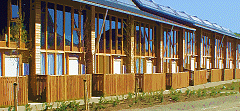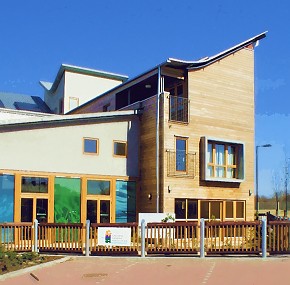|
A reasonably priced housing estate situated within the new town of Thamesmead, just north-east of Woolwich. Archaeologists have found evidence of prehistoric activity on the surface of the natural sandy clay here. The ‘village’
will ultimately consist of several thousand homes. According to figures from the London Planning Advisory Service, which coordinates
strategic planning in the capital, the location was the sixth-largest undeveloped site in London. The completed village will
have a local centre, a riverside walk, a new canal with an ecological and wildlife corridor and a district park of approximately
80 acres. There will also be a new primary school and work-home units. The tenure mix will mirror the rest of London rather
than conform to the proportions in the rest of Thamesmead. A small part of the village has been built as an ‘ecopark’,
an affordable housing project with an emphasis on sustainability and low energy use. In a dissertation on urban utopias,
using Gallions Reach as a case study, Clare Freeman has argued that the ‘urban village’ concept is to some degree
a marketing ploy (aimed at those providing funding as well as potential residents), rather than a truly radical approach to
modern housing needs and suggests that a key aim has been to disassociate the development from its poorly regarded Thamesmead
parent. However, she concedes that the deception may have been necessary to pull off even the limited achievement that this
new community represents.
 |
 |
|
|
|
 |

|
| The administrative and community centre at Gallions Housing Association's Ecopark |
Recent developments at the village include the creation of Gallions Hill – a landscaped amenity
– and a new shopping, leisure and residential zone called The Reach, with a Brewers Fayre pub, children’s nursery
and Tesco Express.
|
 |
|
|
|

